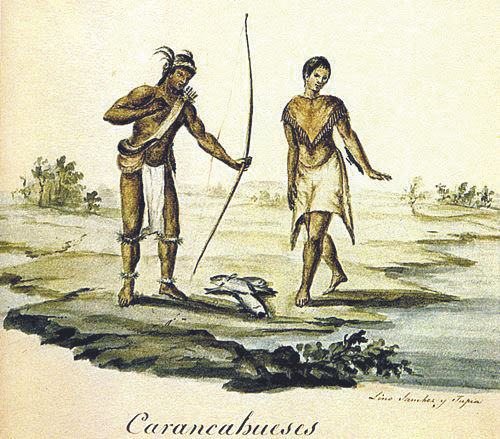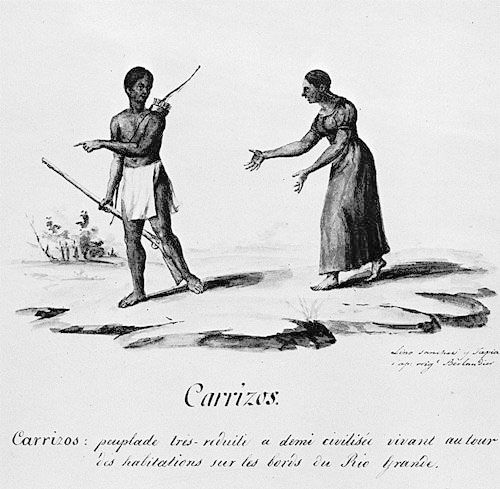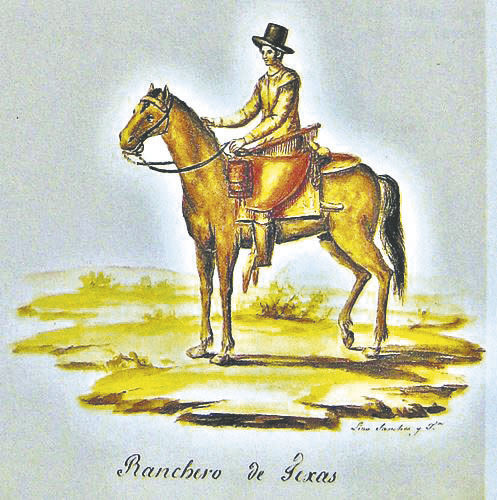BY NORMAN ROZEFF
Likely the next artist, and more, on the scene in Texas was John Russell Bartlett. While he was a well-rounded individual with interests in ethnology and language, it is likely that his political connections in the Whig Party were what brought his appointment to the first United State Boundary Commission that was tasked with delineating the southern border with Mexico as set out in the Treaty of Guadalupe Hidalgo.
In August 1850, Bartlett departed New York on a 27-day journey that would take him to Indianola, Texas. He then traveled overland to El Paso del Norte (Juárez) to begin work with the Mexican boundary commissioner, Pedro García Conde.
This survey was a major challenge because of inaccuracies in Disturnell’s 1847 “Map of the United Mexican States.” This led Bartlett to err in placing the boundary 42 miles north of El Paso. When American boundary surveyor Andrew B. Gray pointed out the inaccuracy of Bartlett’s survey, Bartlett took off for a tour of northwestern Mexico then swung north to California and finally traveled back to Texas via Arizona and New Mexico.
Once again in Texas he learned that Congress had rejected the Bartlett-García Conde line.
Bartlett returned to Rhode Island. Here he wrote a two-volume Personal Narrative of Explorations and Incidents in Texas, New Mexico, California, Sonora, and Chihuahua, Connected with the United States and Mexican Boundary Commission, during the years 1850, 51, 52, and 53 (1854), which became a standard early source of information about Texas and the Southwest. These books contained some of his art work of the regions traversed.
Bartlett’s boundary miscalculations resulted in the need for the later Gadsden Purchase and a re-survey by United States Army officer William Hemsley Emory. He acquired his greatest fame as supervisor of the United States-Mexican boundary survey between 1848 and 1853.
That survey included an exploration of the Big Bend region of the Rio Grande River. Emory’s maps and reports made him the foremost authority of the trans-Mississippi Southwest in the United States.
Emory brought with him several capable artists. These were Austrian Arthur Carl Victor Schott and the Louisiana Frenchman Augustus de Vandricourt. Their work was abetted by the excellent steel engra- ings of Austrian John E. Weyss of the Smithsonian Institute. Greatly enhancing the work was the use of chromolithography, a method of producing multiple colored images that had been controversially pat ented in 1837.
Schott was born on 27 February 1814, in Stuttgart, Germany. Having finished at a gymnasium and technical school in Stuttgart, Schott worked for a year as apprentice at the Royal Gardens in Stuttgart, after which he enrolled at the Institute of Agriculture at Hohemheim. Arthur C. V. Schott was a natur alist and artist.
He worked for the United States Boundary Commission in 1851 as a “special scientific collector,” and helped survey the boundary between Texas and Mexico. “Schott contributed more field data to the border maps than any other member of the team, and ‘became one of the first surveyors of the Rio Grande. He participated in the describing and collecting of botanical, geological, and zoological specimens, also sketching landscapes and members of Indian tribes.”
Later he was to survey the native vegetation in Washington, D.C., and worked on the U.S. Coast Survey.
Augustus de Vandricourt ranged widely in his activities, having been active in France, the United States, and Mexico. His most famous work undoubtedly was his Panoramic View of Niagara Falls. His painting of the Paseo at El Paso may have been done after a sketch by Bartlett.
John E. Weyss was a major on Emory’s expedition. Vienna born in 1820, he evolved into an artist, cartographer and engineer, who served with the US Corps of Topographical Engineers for forty years. He contributed profusely to Emory’s comprehensive report. William Hemsley Emory, Report on the United States and Mexican Boundary Survey (2 vols., Washington: Nicholson, 1857, 1859; rpt., Austin: Texas State Historical Association, 1987) is a striking set available in the Texana section of the Harlingen Library.
In addition to its documentation of the new boundary, the survey report was notable for its natural history content, including paleontology, botany, ichthyology, herpetology, ornithology, and mammalogy. It contains a number of illustrations by the artists previously noted. An individual in Washington who played an important role in executing the illustrations and sketches made by Emory’s survey party was John H. Richard (1807-1881). He first worked in the Smithsonian Building between 1852 and 1855 illustrating the reports of several government exploring expeditions. These included the Wilkes Expedition, the Mexican Boundary Survey, and the U.S. Pacific Railroad Expedition and Survey.
Between 1855 and 1875 Richard worked independently in Philadelphia, frequently taking on Smithsonian commissions, such as hand coloring the drawings of birds by ornithologist Robert Ridgway. There would be a gap of about a decade before the next artist would appear at the border. He was to be Jean Louis Théodore Gentilz. He was born in France in 1819.
The Handbook of Texas Online tells us that, “He was trained as draftsman, painter, and engineer at the Imperial School of Mathematics and Drawing, student of the painter Ramon Quesada Monvoisin and of “my master, [Eugène Emmanuel] Viollet-le-Duc.”
Gentilz was engaged in 1844 by the French entrepreneur Henri Castro to serve as surveyor, artist, and promotion agent for Castro’s projected colony in Texas. (Together with other) he laid out the village of Castroville and its satellites – Quihi, Vandenburg, New Fountain, and D’Hanis-known collectively as the Castro colony. During the ensuing years, he carried his painting gear and surveying instruments over far-flung trails from the western reaches of El Paso del Norte to the Gulf Coast and deep into Mexico.” On a business trip back to France in 1849, Gentilz returned with a French bride and also his young sister Henriette. We learn from the handbook that “ Gentilz focused his artistic vision on the indigenous cultures of the Southwest, whose long and rich history was yet to be recognized.
Indians, Mexican ranchers and villagers, street scenes on both sides of the border, and Spanish missions all captured his attention. Typical of his paintings are the Camp of the Lipans, Comanche Chief, Sobre la Huella, Ranchero, Tamalero, Corrida de la Sandía, San Antonio, Fandango, San José de Aguayo, El Convite para el Baile, and Horse Racing at San Pedro Springs. In addition to his painting and surveying, for many years Gentilz taught painting at St. Mary’s College and in his home.”
One of the few paintings of Brownsville, likely in the 1860s by Gentilz, shows the river waterfront and importantly a large steam-boat. His painting of Bagdad, Mexico is also a rarity. As the handbook summarizes Gentilz’s place in Texas culture “Dedicated to history as well as to art, Gentilz tempered his somewhat rigid painterly style with considerable drafting skill to produce a valuable record of events, characters, customs, architecture, and landscapes of his place and time.”







